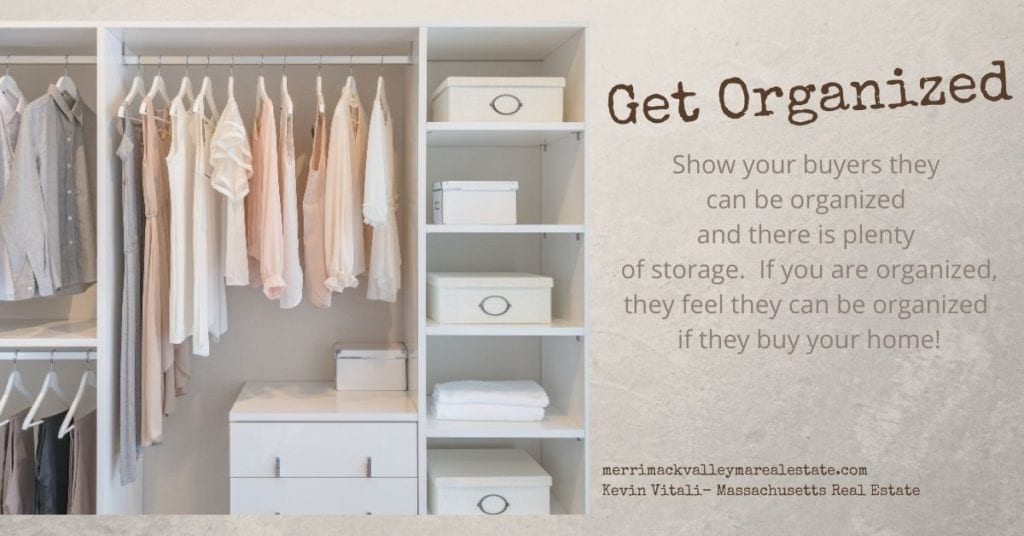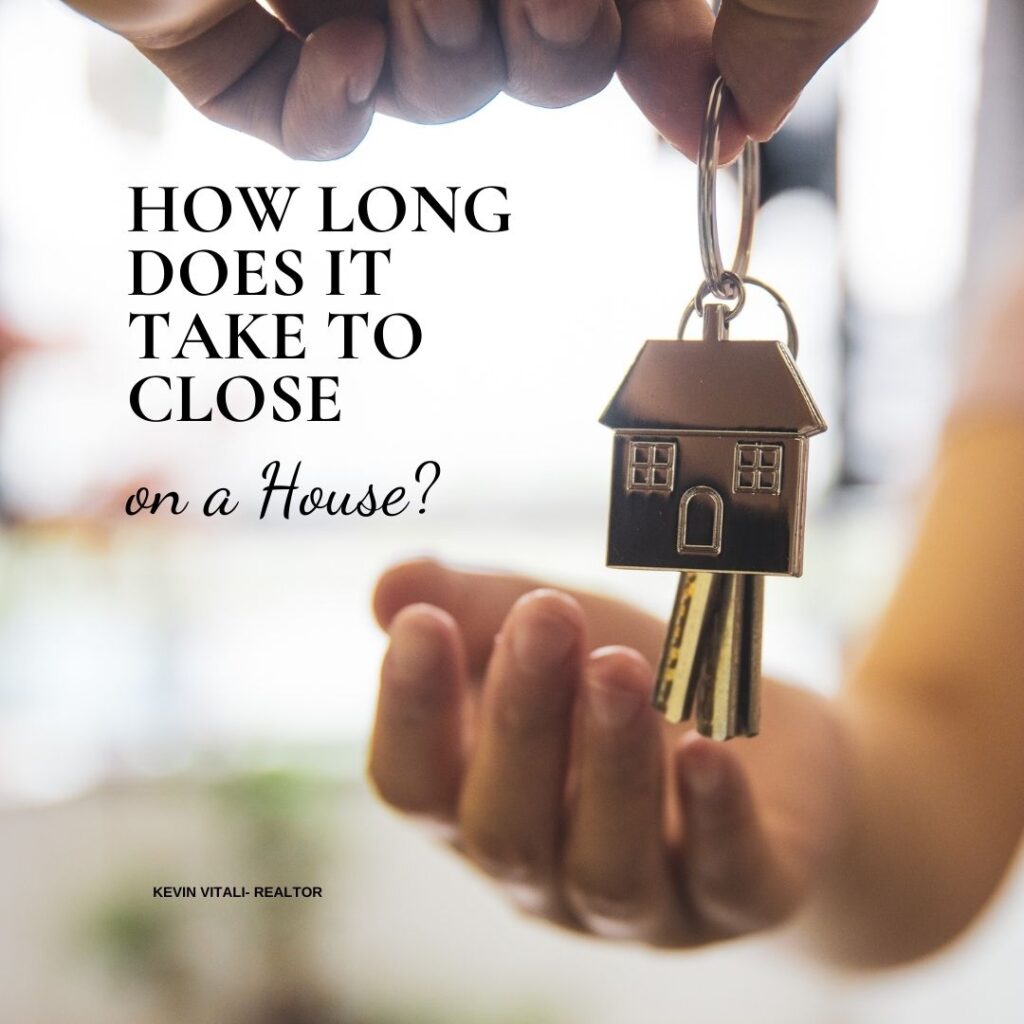
Preparing a home for sale can reap you thousands if not tens of thousands of dollars and can save you tons of aggravation. This home selling checklist for preparing your house will help you get on the right track to make the most of each and every buyer showing.
A home that presents well will increase buyer activity not only in showings but online as well. Remember buyers are making big decisions based on your homes online image and whether they want to view your home in person. It must present well online and carry thru to your buyers showings. The more desirable your home is the more successful your home sale will be.
Preparing your home for the market starts with a thorough cleaning, de-cluttering and depersonalization of your home. If you do nothing else these three checklist items are the most important.
Home Selling Checklist For Preparing Your Home
Almost every home can benefit from a deep clean, de-cluttering and depersonalization when it comes time to sell your home. The great thing about these three home preparation checklist items is you can do it yourself and it costs you little or no money.
But they will go a long way in presenting your home in its best light.
Clean Your Home From Top To Bottom To Prepare For Showings
Your home should be as spotless. If a home is sparkling clean a buyer can overlook a lot of minor issues. If a thorough cleaning is too much for you to do on your own, consider hiring a cleaning company. A deep clean can cost between $450-$1000
- Thoroughly dust your home
- Sweep vacuum and/or mop and polish floors
- Clean your carpet
- Wipe Down all surfaces and cabinets
- Clean all doors and baseboards
- Clean the windows
- Organize closets
- Don’t forget the attic, garage and basement!
De-Clutter And Show Off Your Home And Not Your Stuff
When it comes to selling your home, less is more. We are not selling your personal belongings we are selling your house. You are going to be moving this is a good time to pack and store seasonal and items that are rarely used.
- Make a list of major items that are not coming with you in the move and make a plan of how you will get rid of each item.
- Pack or get rid of your chatckes and collections.
- Pack or get rid of unused or rarely used items.
- Consider renting a dumpster if you have years of unused items stored away.
- Edit each room of your home individually from a buyer’s perspective.
Consider how you are going to store your overflow belongings. Consider an onsite storage container, renting a storage locker, or at a bare minimum neatly storing your items in the garage or basement.

De-Personalize- Take The Home Out Of The House
You want a home buyer to take ownership of your home while they are taking the time to do a personal showing. It is hard to do when it screams it is someone else’s home. I always tell sellers you want to “take the home out of the house”. You are selling the house for someone else to make it theirs not a home that is yours.
- Remove all family photos, albums etc…
- Remove any religious items.
- Tone down any highly personalized décor. The more neutral your décor the better.
- Remove any collections- My favorite home stager says if you have more than three it is a collection!
Preparing Individual Rooms
The Kitchen
Your kitchen is what I call a money room. It is one of the most scrutinized areas of your home. Even if it is small and even outdated, show your buyer it can be clean and organized. Take the time to stage your kitchen to show it at it’s best.
- Clean, then re-clean it and clean it again.
- Clean the countertops.
- Clean and degrease the stove, cabinets and vent hood.
- Clean the inside of cabinets, refrigerator, appliances and drawers.
- Clean the floor. Mop, wax and polish where appropriate.
- Clean all the light fixtures.
- Clean your windows and glass slider
- Remove excess appliances and items from the countertops. If the appliance isn’t in pristine condition or is an often unused item, store it away or get rid of it.
- Make sure you have no plumbing leaks.
- Replace any old dried-out caulking around countertops, sinks and fixtures.
- Organize cabinets pantries and drawers.
- Remove all the window treatments if possible. Curtains and drapes can be highly personalized and block natural light. And, yes I said remove… if you absolutely have to have something put up a simple sheer.
- Consider removing rugs. You want to show off the floor and often throw or area rugs are distracting. If you feel you must have a rug stick with a neutral natural fiber.
- Replace old and outdated lighting and cabinet fixtures.
The Bathrooms
Per square foot bathrooms are the most expensive to renovate. It is important to show them off in their best light. When preparing bathrooms for a home sale think spa!! Pristine and clean.
- Clean, then re-clean it and clean it again.
- Clean the countertops and sink.
- Clean the tub tower and faucets so they sparkle.
- Clean the floor. Mop, wax and polish where appropriate
- Clean and replace missing grout.
- Clean all the light fixtures.
- Clean bathroom windows
- Clean the toilet and make sure it is seated properly and in working order.
- Remove all personal hygiene products from vanity and tub/shower. Find a way to store them and be able to pull them away during showings.
- Organize linen closet.
- Replace any shower curtains, towels and bath mats with neutral-colored items.
- Consider replacing any outdated lighting fixtures, bath fixtures, hardware and mirrors.
- Make sure there is no evidence of mold anywhere and if it is on the walls or ceiling clean remove use a stain-blocking primer and repaint.
- Replace an old cracked and mildewed caulking.
- Fix any faucet drips or plumbing leaks.
- Remove curtain, if you need one stick to a simple sheer or blind.
Dining Room/Area
- Thorough dusting from top to bottom.
- Clean and polish floors or clean carpet if it is wall to wall.
- Remove all personal items, glasses, personal photos, magazines, tablets, etc…
- If you have throw rugs consider completely removing or replacing them with a small natural-fiber or neutral colored carpet.
- Edit the room. Make sure the flow is proper for the room. Show the buyers that people can sit comfortably and not be cramped. A dining room or kitchen table can often have the leaves taken out. In a dining room seating for 4-6 is adequate. In small eating areas off the kitchen, you can even pair it down to seating for two.
- Remove bulky furniture that may not belong. Often dining areas have hutches or side tables that are too large for space. Get rid of them.
- Edit andy hutches or side tales so there are only a few items on them.
- Remove any heavy curtains and drapes.
Living Room/ Family Rooms
- Thorough dusting from top to bottom.
- Clean and polish floors or clean carpet if it is wall to wall.
- Remove all personal items, glasses, personal photos, magazines, tablets, etc…
- If you have throw rugs consider completely removing or replacing them with a small natural-fiber or neutral colored carpet.
- Edit the room.
- Remove bulky furniture that may not belong. Often sectionals may be too large for space, consider pairing down the sections.
- Less is more. A living room needs a couch, a chair, a coffee table a tv and tv stand and a side table at most.
- Edit and neaten up any bookshelves, coffee table, etc….
- Check and make sure the traffic flow is not hindered. Doorways should not be blocked and there should be room to adequately move around the area. A good rule of thumb is to leave at least 3 feet in major traffic flow areas.
- Remove any heavy curtains and drapes.
Master Bedroom/Bedrooms
A Master Bedroom is another room that is a high priority on your buyer’s list and should be a key part of a home selling checklist. Think retreat when preparing and staging a master bedroom.
- Thorough dusting from top to bottom.
- Clean and polish floors or clean carpet if it is wall to wall.
- Remove all personal items, glasses, personal photos, medications, books, magazines, hygiene products, etc…
- If you have throw rugs consider completely removing or replacing them with a small natural-fiber or neutral colored carpet. If you have a nice hardwood floor or laminate floor show it off!
- Pack up seasonal and rarely used clothing. Keep it to a minimum!
- Organize your closets.
- Edit the room. Remove bulky furniture that may not belong. Often bedrooms may have more than 2 dressers. Remove extra storage beyond a dresser or two. Of course, consider the size of a room. If your bedroom is 18 x24 it could handle 2 dressers an armoire. A 11×12 bedroom shouldn’t have more than one dresser.
- Dressers and nightstands should be limited to a few items on top. A nightstand could be lamp and no more than 2-or 3 decorative items. If nightstands are open underneath edit to just a few items.
- Dressers should not be covered with combs, perfume, beauty or grooming products. It should be limited to 2 or 3 decorative items.
- Less is more. The Master bedroom room needs a bed, a nightstand, and a dresser.
- Check and make sure the traffic flow is not hindered. Doorways should not be blocked and there should be room to adequately move around the area. A good rule of thumb is to leave at least 3 feet in major traffic flow areas.
- Add large mirrors to open up your bedroom’s space. Above a low dresser is a great spot for a large mirror.
- Remove any heavy curtains and drapes.
Children’s Bedrooms
Moving is tough on young children. I try not to disrupt their space too much. But you can still organize and edit their belongings.
Older Teen’s and Spare Bedrooms
Follow the same principles as the master bedroom.
One note about spare bedrooms. Often a spare bedroom can be used as a catch-all room. Get rid of any items that don’t make the room present as a bedroom. Bedrooms translate to cash. If a bedroom doesn’t present as a bedroom as much as you want to call it one, a buyer may not include that in a home’s bedroom count.
Playrooms
Again, young children should not be disrupted, but playrooms can be organized and decluttered. Often many older, unused toys can be packed up or given away. Follow the same principles you would for a living room or family room.
Home Office
Some homes have a room used specifically used as an office and having a comfortable workspace is huge now. Make sure your office space looks organized and professional.
- Thorough dusting from top to bottom.
- Clean and polish floors or clean carpet if it is wall to wall.
- Declutter desk and worktops.
- File away any important papers.
- Edit any bookshelves and credenzas down to a few items.
- Show you have a viable working office that you can spend hours at work.
- Edit the room to show a functioning office but not cluttered
Fresh Paint
If you are going to spend any money preparing your home there is nothing that gives you a better return than a fresh, neutral color paint job. If your painting skills are poor or you don’t have the time. Consider a professional painter.
A word about neutral paint colors. Take a living room painted bright red. It is highly personalized and forces a home buyer to either paint or change their current decor. Unfortunately red is not very versatile and could be objectionable. Bright red does not allow you to introduce a variety of other colors. It is a bold statement…. But it may not be a statement your homebuyer wants to make or even hates.
Take a soft warm grey wall color and now almost any color decor can be worked into the room.
- Are there areas that need to be freshened up with paint? List areas:
- Are there areas that have a highly personalized paint color that needs to be repainted? List areas:
- Don’t forget the ceilings if they look dinghy, consider fresh paint. List areas:
- Trim and doors. List area:
- Outside Your Home. Consider siding, trim, doors, windows and garage doors. List areas:
The Yard
If you are starting preparation in a prior season to when you are listing, consider overseeding and rejuvenating unhealthy areas of the yard.
- Weed all garden areas.
- Lay down fresh bark mulch in all garden beds.
- Make sure walkways, stairs, decks and entrances are in good repair.
- Power wash all walkways, decks and patios as needed.
- Store away any unused lawn and play equipment.
- Children’s play equipment should be neat and in good repair.
Outdoor Living Areas
Outdoor living areas like screened porches, gazebos, patios and decks are areas that can contribute significantly to the appeal of your home. Showing them in good repair and how they are best used can go a long way in attracting a buyer.
- Make sure everything is in good repair.
- Powerwash to remove dirt and mildew.
- Apply fresh paint or stain.
- If underutilized take the time to set up an attractive area with outdoor seating and eating areas.
- Edit items in your outdoor living area like any other room in your house.
Garages and Basements
Garages and basements are often overlooked when preparing a home for sale. But both can add a significant amount of value to a home if prepared properly. They are areas that are primarily used for storage and to house utilities for the house. And, in the case of a basement, can be used for additional living space.
- Clean every corner.
- Replace dirty Insulation in basement ceilings.
- Make sure it is adequately lit and doesn’t seem dark and dingy.
- Organize!! Bring in shelves and bins to neatly organize your garage and basement.
- Consider painting the floor for a huge impact.
Curb Appeal Is A Home Buyers First Impression
Curb appeal is so important when selling your home and should be part of any home selling checklist. Curb appeal is the attractiveness of your home as you approach from the street and carries through the front entrance. Curb appeal sets the first impression a home buyer will have of your home.
A great first impression will make home buyers minimize minor issues inside the home. Start with a bad impression and the showing can go downhill from there.
As a seller, grab a friend and both of you approach the house like a buyer. What do you see? Are their areas of concern or are their areas that are bland and lackluster?
If you don’t like it, your home buyers will be even more critical. If it is at all within your budget fix it!
- Driveways, walkways, and stairs are all in good repair. You don’t want a tripping hazard.
- Garden beds are weeded and mulched.
- All outdoor lights are working. Consider adding some solar walkway lights if the lighting in the evening is inadequate.
- The front door is clean and freshly painted along with any shutters.
- Consider a welcome mat and seasonal wreath.
- Soften the line of where the house meets the land with foundation planting or bring in large potted plants.
- Consider hanging plants on a front deck or porch.
- A home’s landscaping should soften lines of walkways driveways and the area where the home meets the land. Landscaping also can be used to rame the house. Consider adding garden beds or trees if it is in your budget and it would add to the curb appeal of your home.

Consider These Small Upgrades
We already mention paint. But I can’t stress how important fresh paint can go and give you the best bang for your buck. Consider spot painting areas of concern painting entire walls or even a whole room.
- Replace and update hardware. Replacing door handles, knobs, outlet covers, hinges can be relatively inexpensive and can go a long way. Pay close attention to baths and kitchens.
- Replace outdated light fixtures. The Home Depots of the world have made lighting relatively cheap. If your lighting is outdated consider replacing the overhead lights in key wares with a current style.
- Refinish Hardwood Floors. Nothing beats newly refinished floors.
- Add a few plants, trees or shrubs to increase curb appeal if the approach is lackluster.
Repairs To Consider Adding to Your Home Selling Checklist
If it is in the budget consider adding major repairs that may be a safety, health or structural issue to your home selling checklist.
Big-ticket items that have an immediate need cause a lot of concern for buyers. Even if they are willing to take them on they will take them off the price of the house or walk away during the home inspection period.
- The roof. If it is leaking or on the verge of needing to be replaced consider replacing or at least repairing.
- Faulty electrical issues.
- Faulty plumbing. Take care of any leaking or improperly working plumbing.
- HVAC problems. If it working fine but older definitely get it serviced with a clean bill of health.
- Any water penetration of the home.
Why Use A Home Selling Checklist
Can you sell your house without using this home seller checklist and preparing your home?
Absolutely a home can be sold as-is, but it will cost you in the end. It will prevent you from getting top dollar for your home, it will increase the angst during the home inspection period and it prevents your home from not selling. Using the home selling checklist and putting your home in top showing condition will also speed up the sale of your home and save you the stress of getting ready for showing after showing.
Involve your REALTOR or real estate agent early on in the preparation process. Your agent can help you identify projects that detract from your home’s value or appeal and the ones that will have a positive effect on the sale on the home selling checklist.




